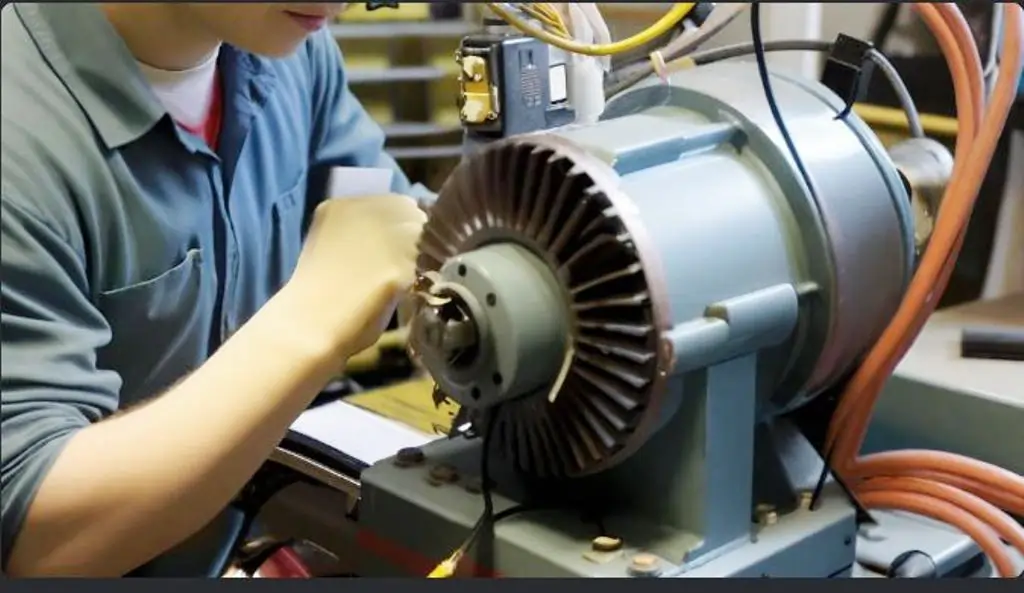Electric Motor Maintenance
Regular electric motor maintenance is essential for ensuring long-term efficiency and reliability. By routinely inspecting and servicing motors, you can significantly improve their performance, extend their lifespan, and reduce operational costs associated with downtime or repairs. Without proper maintenance, motors are prone to issues such as overheating, increased energy consumption, and mechanical failures, all of which lead to costly disruptions.
In 2024, the focus on motor maintenance emphasizes several key areas: regular air gap checks, proper insulation resistance testing, consistent lubrication of bearings, and precise motor alignment. These critical practices ensure that your motor runs smoothly and efficiently, preventing premature wear and costly breakdowns. Following this guide will help maintain optimal motor performance while safeguarding against unexpected failures.
Routine Visual Inspection of Electric Motors
Performing regular visual inspections is a fundamental aspect of electric motor maintenance, helping to identify potential issues early and preventing costly breakdowns. Here’s a breakdown of key areas to focus on during routine inspections:
1. Checking for Wear and Tear
- Signs of Damage: Look for visible signs of wear, such as cracks, dents, or mechanical stress on the motor’s external parts. Pay close attention to moving components like shafts and bearings.
- Rust or Corrosion: Check for any rust or corrosion, especially in marine or industrial environments where exposure to moisture and harsh chemicals is common. Corrosion can weaken components and lead to motor failure if not addressed promptly.
2. Exterior Cleaning
- Dust, Dirt, and Debris: Keeping the motor housing free from dirt, dust, and debris is critical for optimal performance. Accumulated debris can block ventilation, causing the motor to overheat and lose efficiency.
- Preventive Cleaning: Regular cleaning using a dry cloth or compressed air ensures proper airflow and prevents contaminants from entering sensitive areas of the motor, enhancing its longevity.
3. Cabling and Connections
- Cable Insulation: Inspect all power and control cables for signs of fraying, cracking, or damage to the insulation. Damaged cables can lead to short circuits or electrical faults.
- Secure Connections: Ensure all electrical connections are tight and secure. Loose or corroded connections can lead to inefficient power transmission, overheating, and eventual motor failure.
Lubrication of Bearings in Electric Motors
Proper lubrication of bearings is crucial for maintaining motor performance and preventing premature failure. Bearings play a vital role in reducing friction between moving parts, ensuring smooth operation, and enhancing the overall efficiency of the motor. Here’s a comprehensive look at the importance of bearing lubrication:
1. Why Bearings Matter
- Role in Motor Performance: Bearings support the rotor and allow it to rotate with minimal friction, which is essential for efficient energy transfer and smooth operation. Well-lubricated bearings reduce wear and tear, increase the lifespan of the motor, and minimize energy losses.
- Preventing Damage: Without proper lubrication, bearings are prone to overheating, increased friction, and eventual failure, which can lead to costly motor breakdowns and downtime.
2. Types of Lubricants
- Grease: Grease is the most commonly used lubricant for motor bearings. It provides long-lasting protection and is ideal for motors in demanding environments. Lithium-based grease is widely recommended for standard motor applications, while high-temperature grease is used in motors exposed to extreme heat.
- Oil: Some motors, particularly large or specialized ones, use oil lubrication systems. Synthetic oils are often preferred due to their longer lifespan and ability to handle high temperatures without breaking down.
3. Lubrication Schedule
- Usage-Based Scheduling: For motors in continuous operation, bearings should be lubricated more frequently, typically every 6 months. For motors used intermittently, an annual lubrication schedule is sufficient.
- Environment-Based Adjustments: Motors operating in harsh environments, such as those exposed to high humidity, dust, or extreme temperatures, may require more frequent lubrication. Always follow manufacturer guidelines to determine the ideal schedule for specific applications.
4. Signs of Poor Lubrication
- Overheating: Bearings that aren’t adequately lubricated generate excess friction, leading to overheating. Overheated bearings can cause motor inefficiency and potential damage to the internal components.
- Noise: Squealing, grinding, or rumbling noises are often early indicators of poor lubrication. These sounds suggest that the bearings are dry or have insufficient grease.
- Excess Vibration: Increased vibration is another sign that the bearings are not properly lubricated. If left unchecked, this can result in mechanical failure, requiring costly repairs or replacements.
Vibration Analysis in Electric Motors
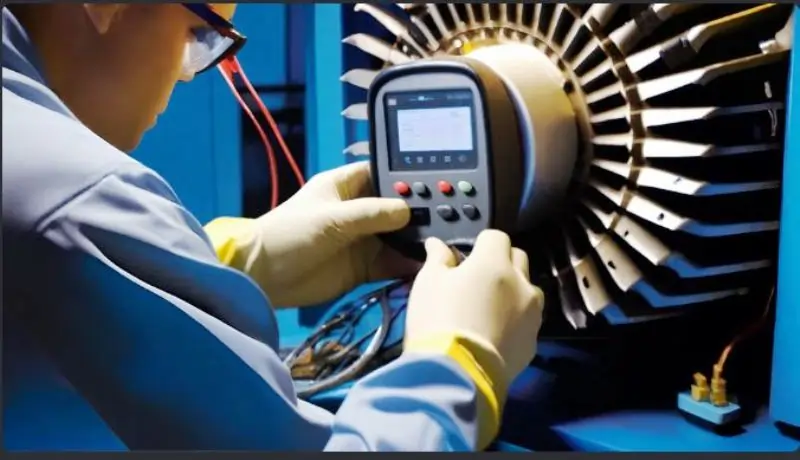
Vibration analysis is a critical aspect of electric motor maintenance that helps identify issues before they lead to major failures. Monitoring vibration levels provides valuable insights into the health of the motor and its components, allowing for timely corrective actions.
1. What Is Vibration Analysis?
- Introduction to Vibration Monitoring: Vibration analysis involves the measurement of the motor’s vibrations to detect abnormalities. Motors naturally produce vibrations, but excessive or abnormal vibrations can indicate mechanical issues such as misalignment, imbalance, or wear and tear. By regularly monitoring these vibrations, technicians can assess the motor’s health and prevent costly downtime and repairs.
2. Common Causes of Excessive Vibration
- Imbalance: If the rotor or other rotating parts of the motor are not evenly balanced, it can lead to uneven distribution of forces, causing vibrations. This imbalance may result from wear, dirt accumulation, or manufacturing defects.
- Misalignment: Misalignment occurs when the motor’s shaft is not aligned properly with the driven equipment. Misalignment can be angular or parallel and can cause increased friction, leading to vibrations.
- Loose Parts: Loose bolts, connections, or components can cause excessive vibrations. These vibrations may worsen over time if not addressed, leading to mechanical damage.
3. Corrective Actions
- Balancing: If an imbalance is detected, it can be corrected by adjusting the rotor or redistributing weight. This may involve adding or removing balancing weights to ensure even rotation.
- Tightening: Loose bolts and components should be tightened to ensure that the motor is securely mounted and connected. This prevents excessive vibrations that could damage the motor or surrounding equipment.
- Realignment: Proper alignment between the motor and driven equipment is crucial. Realignment is performed using precision tools to ensure the motor’s shaft is perfectly aligned with the equipment, reducing wear and vibration.
4. Tools for Vibration Monitoring
- Vibration Analyzers: These handheld or portable devices measure vibration levels and frequencies, helping identify the source of any irregularities. Modern analyzers often provide real-time data and detailed reports.
- Accelerometers: Small sensors that can be mounted on different parts of the motor to measure acceleration forces. Accelerometers provide accurate vibration readings and can be used to monitor the motor continuously or during periodic checks.
- Laser Alignment Tools: These tools are used to ensure precise alignment between the motor and the equipment it drives. Proper alignment reduces vibration and increases motor efficiency.
- Vibration Meters: Basic vibration meters offer a quick way to check vibration levels and ensure they are within acceptable limits.
In summary, vibration analysis is an essential preventive maintenance tool that helps identify mechanical issues before they escalate. By understanding the common causes of excessive vibration, using corrective actions like balancing and realignment, and employing the right tools for monitoring, technicians can ensure that motors run smoothly and efficiently, reducing downtime and extending motor life.
Insulation Resistance Testing in Electric Motors
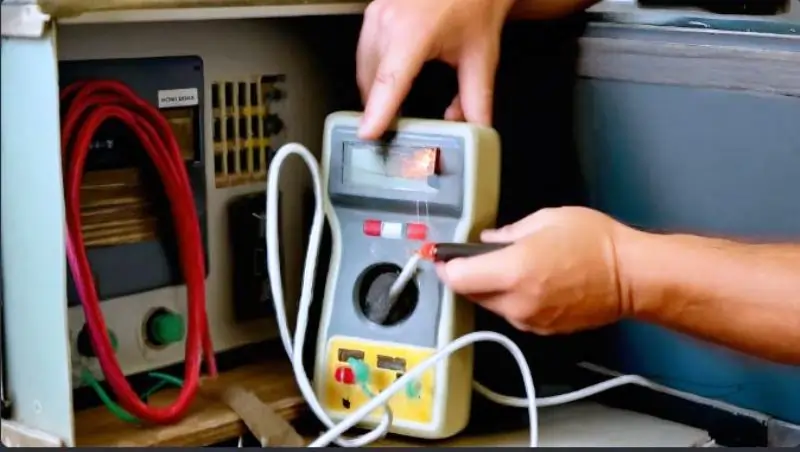
Insulation Resistance (IR) Testing is a vital procedure to assess the condition of the insulation in electric motors. It helps prevent electrical failures by identifying potential insulation weaknesses early, ensuring safe and efficient motor operation.
1. Importance of Insulation Resistance (IR) Testing
- Preventing Electrical Failures: Insulation resistance testing measures the insulation’s ability to resist current leakage between the motor’s windings and ground. A drop in insulation resistance can lead to electrical faults, including short circuits and ground faults, potentially causing motor failure or hazardous situations. By regularly conducting IR tests, potential insulation issues can be detected before they result in catastrophic failure, protecting both the motor and personnel.
- Extending Motor Life: Proper insulation ensures that electrical energy flows through the intended path, improving motor efficiency and reducing energy loss. Early detection of insulation degradation can also help prolong the motor’s lifespan.
2. How to Perform an IR Test
- Step-by-Step Guide Using a Megger:
- Power Off the Motor: Ensure the motor is de-energized and disconnected from the power supply to prevent any electrical hazards.
- Prepare the Megger: Select the appropriate test voltage on the Megger based on the motor’s rated voltage. For low-voltage motors, use a 500V or 1000V setting; for high-voltage motors, use 2500V or more.
- Connect the Leads: Attach one lead of the Megger to the motor’s winding (conductor) and the other lead to the motor’s frame (ground).
- Apply Test Voltage: Press the test button to apply the test voltage. Hold the test for about 60 seconds to get a stable reading.
- Record the Reading: The insulation resistance value, measured in megohms (MΩ), will be displayed on the tester. High values indicate good insulation, while low values suggest deterioration.
3. Acceptable IR Values
- Understanding the Readings:
- For low-voltage motors (below 1 kV), the insulation resistance should typically be at least 1 MΩ per kV of operating voltage.
- For high-voltage motors, acceptable insulation resistance values are generally 100 MΩ or higher.
- When to Repair or Replace Insulation: If the IR reading falls below the recommended threshold, this could indicate moisture, contamination, or insulation aging. A significant drop in resistance from previous tests may require immediate insulation repair or replacement.
4. Frequency of Testing
- Recommended Testing Intervals:
- For continuously running motors, IR tests should be conducted every 6 to 12 months.
- For intermittent or standby motors in harsh environments (e.g., high humidity, high temperatures), testing should be done more frequently, approximately every 3 to 6 months.
- Critical motors, such as those in safety systems or essential operations, should be tested monthly to ensure reliable insulation.
Air Gap Checks in a Dismantled Motor: Importance and Consequences of Variation
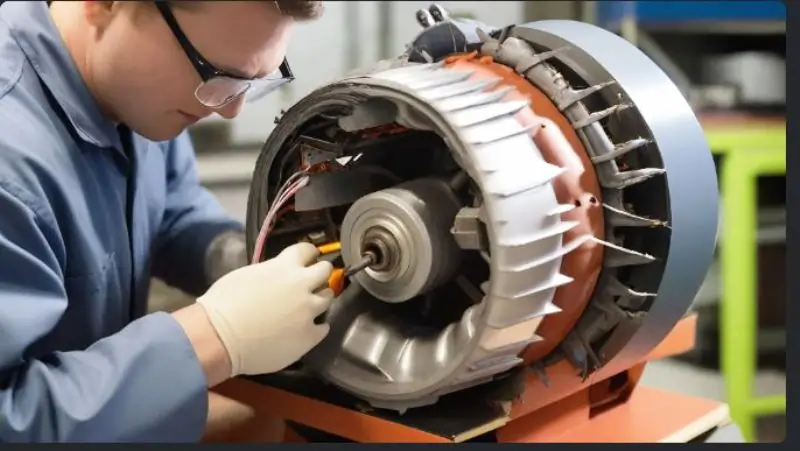
Air gap checks are crucial when a motor is dismantled for inspection or maintenance. The air gap, which is the space between the rotor and stator, plays a vital role in the motor’s performance. Variations in the air gap size can lead to significant mechanical and electrical issues.
1. What Is the Air Gap?
- The air gap is the small space between the rotor (the rotating part) and the stator (the stationary part) in an electric motor. This gap allows the rotor to rotate freely within the stator, enabling the electromagnetic interaction that drives the motor’s operation. The size and uniformity of the air gap are critical to ensuring smooth, efficient motor performance.
2. Checking the Air Gap
- Measuring the Air Gap: When a motor is dismantled, the air gap must be measured using feeler gauges or specialized tools. It is important to check the gap at multiple points around the circumference of the rotor to ensure it is uniform.
- Uniformity of the Gap: A consistent air gap is key to preventing uneven magnetic forces, which can cause vibrations, noise, and efficiency loss. If the air gap varies, it could indicate mechanical wear or misalignment that requires correction.
3. Consequences of a Larger Air Gap
- Loss of Efficiency: A larger-than-specified air gap weakens the magnetic field between the rotor and stator, reducing the motor’s ability to generate torque efficiently. This results in increased energy consumption for the same output.
- Increased Power Consumption: With a larger air gap, the motor requires more power to perform the same work, leading to higher energy costs.
- Overheating: A weakened magnetic field means the motor will work harder, generating excess heat. Over time, this can cause overheating, leading to insulation damage and a shorter motor lifespan.
4. Consequences of a Smaller Air Gap
- Rotor-Stator Contact: A smaller air gap increases the risk of physical contact between the rotor and stator, especially during startup or under heavy load. Such contact can cause severe damage to both components.
- Mechanical Instability: A reduced air gap can create uneven forces, leading to vibrations that affect the motor’s mechanical stability.
- Excessive Noise: A too-small air gap can cause the motor to produce unwanted noise during operation, which may indicate impending mechanical failure.
5. Ensuring Optimal Air Gap
- Manufacturer’s Specifications: It is crucial to maintain the air gap size recommended by the motor manufacturer. This ensures that the motor operates efficiently, minimizing energy losses and preventing mechanical damage.
- Regular Checks: During routine maintenance, checking the air gap helps detect early signs of wear, misalignment, or mechanical issues, ensuring the motor continues to perform at its best.
Electrical Testing and Motor Winding Checks
Performing regular electrical testing and motor winding checks is essential to ensure that motor windings are in good condition and operating efficiently. These tests help prevent failures, improve motor longevity, and identify potential issues before they escalate.
1. Winding Resistance Tests
- Purpose: Winding resistance tests measure the resistance across the motor’s windings to ensure it is uniform. Any variation in resistance could indicate a problem with the winding, such as damaged or shorted turns.
- How to Check: Using an ohmmeter or resistance tester, measure the resistance of each phase of the motor windings. The readings for each phase should be close to each other. Significant differences in resistance could signal a fault, such as insulation breakdown or winding damage.
2. Detection of Short Circuits and Open Circuits
- Short Circuit Detection: Short circuits in the windings can cause the motor to overheat and fail. Using a continuity test or an insulation resistance tester (Megger), you can check whether the windings are shorted to each other or to ground. If continuity exists where it shouldn’t, this indicates a short circuit.
- Open Circuit Detection: An open circuit occurs when the motor winding is broken or disconnected. A continuity test can detect this fault by verifying whether current can flow through the entire length of the winding. If no continuity is detected, the winding is likely open and requires repair or replacement.
3. Polarization Index (PI) Testing
- Purpose: PI testing is used to assess the long-term health of motor windings by measuring the insulation resistance over time. It gives an indication of the winding’s condition and the effectiveness of its insulation.
- How It Works: A PI test involves applying a DC voltage to the motor winding and measuring the insulation resistance at two intervals—typically at 1 minute and 10 minutes. The ratio of the 10-minute to 1-minute readings is the polarization index. A PI value greater than 2.0 indicates good insulation health, while values lower than 1.0 suggest insulation deterioration.
4. Tips for Extending Winding Life
- Regular Cleaning: Dust, dirt, and moisture can accumulate on motor windings, leading to insulation breakdown. Regular cleaning of the motor’s internals helps prevent contamination from affecting the windings.
- Re-varnishing: Over time, the varnish on motor windings may degrade. Re-varnishing the windings periodically helps to restore insulation strength and protect against environmental damage.
- Avoid Overloads: Ensure that the motor is not subjected to loads beyond its rated capacity, as this can cause excessive heat generation in the windings. Overheating leads to insulation degradation and shortens the motor’s lifespan.
Motor Alignment and Balancing
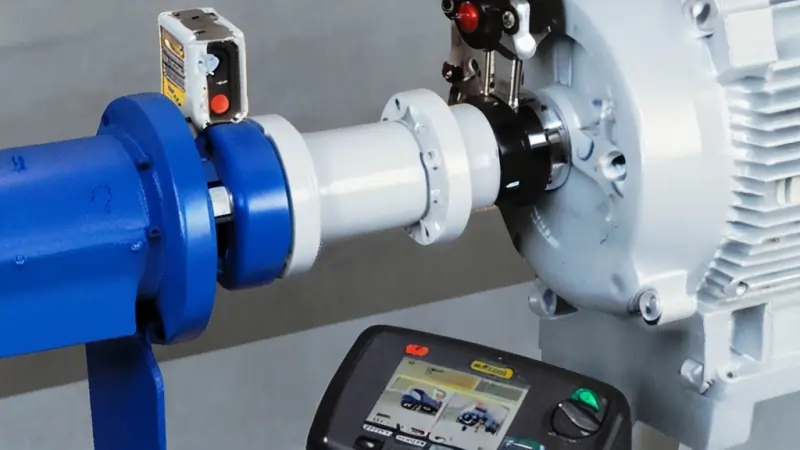
Proper motor alignment and balancing are crucial for maintaining the health of the motor and its connected equipment. Misalignment and imbalance can cause excessive vibration, wear, and premature failure of the motor and the systems it drives.
1. Why Alignment Matters
- Impact of Misalignment: Misalignment between the motor and its driven equipment (such as a pump or compressor) can lead to increased friction, energy loss, excessive vibration, and mechanical stress. This can cause premature bearing and coupling failure, higher energy consumption, and excessive wear on both the motor and the equipment it drives. Maintaining proper alignment ensures smoother operation, reduced wear, and greater efficiency.
2. Types of Misalignment
- Parallel Misalignment: Occurs when the shafts of the motor and the driven equipment are not on the same horizontal or vertical plane, but remain parallel. This causes uneven loading and stress on the motor’s bearings.
- Angular Misalignment: Happens when the motor and the driven equipment shafts are not parallel and form an angle at the coupling. This misalignment puts additional strain on the motor’s components.
- Combined Misalignment: A combination of both parallel and angular misalignment, where the shafts are neither parallel nor aligned on the same plane, resulting in increased vibration and mechanical stress.
3. How to Align a Motor
- Step-by-Step Alignment Procedures:
- Power Off the Motor: Ensure the motor and the driven equipment are completely de-energized to avoid hazards.
- Check for Obvious Issues: Visually inspect the mounting and connections to identify any obvious signs of misalignment or mechanical issues.
- Use Alignment Tools: Utilize a dial indicator, laser alignment tool, or feeler gauges to measure the alignment between the motor and the driven equipment.
- Adjust the Motor Position: Based on the measurements, adjust the motor’s position either horizontally or vertically to bring it into alignment with the driven equipment. Shims can be used to lift or lower the motor as needed.
- Recheck Alignment: Once adjustments are made, recheck the alignment to ensure both shafts are properly aligned.
- Secure the Motor: Once aligned, securely tighten the mounting bolts and ensure the motor and equipment remain aligned under load conditions.
4. Balancing the Motor
- Importance of Rotor Balancing: Balancing the rotor is essential to prevent excessive vibration, which can lead to mechanical wear, noise, and even motor failure. An unbalanced rotor causes uneven centrifugal forces, putting stress on the bearings and other rotating components.
- How to Balance the Motor:
- Use a Balancing Machine: Place the rotor on a balancing machine, which measures the distribution of mass around the rotor and identifies areas of imbalance.
- Add or Remove Weight: Adjust the rotor’s balance by adding or removing small weights on specific parts of the rotor to counteract the imbalance.
- Test and Rebalance: After making adjustments, retest the rotor on the balancing machine to ensure that it rotates smoothly and without vibration.
Proper motor alignment and balancing are crucial for maintaining the longevity and efficiency of the motor and the systems it powers. Misalignment leads to excessive wear and energy losses, while an unbalanced rotor can cause damaging vibrations. By following correct alignment procedures and ensuring the rotor is properly balanced, the motor will operate smoothly and efficiently, reducing the risk of mechanical failure and downtime.
Overload Protection and Relay Testing
Overload protection is an essential feature in electric motors that prevents damage caused by excessive currents. Overload relays play a crucial role in safeguarding the motor by disconnecting it from the power supply when dangerous conditions arise. Proper testing and calibration of these relays ensure that the motor is adequately protected from overcurrent situations.
1. What Is Overload Protection?
- Role of Overload Relays: Overload protection devices, such as overload relays, protect motors by monitoring the current flowing through the motor. If the current exceeds a predefined safe limit for an extended period, the relay trips the motor, cutting off the power supply to prevent overheating, insulation damage, or motor failure. Overload protection is particularly important during heavy loads, stalled conditions, or when a motor is continuously operating at or beyond its rated capacity.
2. Types of Overload Devices
- Electronic Overload Relays: These relays use advanced sensors and microprocessors to monitor the motor’s current. They are highly accurate, adjustable, and often feature diagnostic capabilities. Electronic relays are widely used in modern industrial motors because they offer precise protection and can be easily calibrated.
- Thermal Overload Relays: These relays use a bimetallic strip or heater element to sense motor overload. As the motor draws excessive current, the strip heats up and bends, triggering the relay to trip. Thermal relays are commonly used in smaller or older motors and are simpler to operate, though less precise than electronic relays.
- Magnetic Overload Relays: Magnetic relays detect overload conditions based on magnetic fields created by the motor’s current. When the current exceeds the safe limit, the magnetic field forces the relay to trip. These relays respond faster than thermal ones and are effective for sudden overloads.
3. Testing and Calibrating Relays
- How to Test Overload Relays:
- Disconnect the Motor: Ensure the motor is powered down and disconnected from the power source for safety.
- Simulate Overload Conditions: Use a test setup to simulate overload conditions by gradually increasing the motor’s load or by introducing test currents that exceed the relay’s trip setting.
- Monitor Relay Response: Observe the relay to ensure it trips when the current exceeds the designated threshold. This verifies that the overload protection is functioning correctly.
- Calibrating the Relay:
- For electronic relays, use the built-in calibration controls or software interface to adjust the trip point based on the motor’s rated current. Ensure that the settings align with the manufacturer’s specifications and the motor’s operational requirements.
- For thermal and magnetic relays, adjust the trip settings by turning the calibration dial or setting the trip time, ensuring the relay trips within the required timeframe for overcurrent protection.
4. Signs of Overload Problems
- Frequent Tripping: If the overload relay trips frequently, this could indicate that the motor is running under excessive load, or that the relay settings are too low. Consistent tripping without apparent cause may require recalibration or a review of the motor’s load conditions.
- Overheating: Excessive current draw can cause the motor to overheat, which may damage insulation and reduce the motor’s lifespan. A properly functioning overload relay should trip the motor before severe overheating occurs.
- Erratic Performance: Symptoms of erratic motor performance, such as slow startups, irregular speeds, or intermittent power loss, can be signs of an overload condition. These issues may suggest that the motor is working beyond its capacity and that the overload relay needs adjustment.
Cooling System Maintenance for Electric Motors
Proper cooling system maintenance is essential to prevent motors from overheating and to ensure efficient operation over time. Effective cooling helps maintain optimal motor performance and extends the lifespan of the motor by keeping it within safe temperature limits. The cooling system can consist of air-based or liquid-based components, both of which need regular checks and maintenance.
1. Checking Cooling Fans and Ventilation
- Importance of Airflow: Air-cooled motors rely on cooling fans and proper ventilation to dissipate heat generated during operation. Without adequate airflow, the motor can overheat, which may lead to insulation damage, reduced efficiency, and eventual failure. Ensuring that cooling fans are working properly and that ventilation pathways are clear helps maintain effective cooling.
- What to Check: During routine maintenance, inspect the cooling fans for damage or wear. Make sure they are rotating smoothly without obstructions. Additionally, ensure that the motor’s ventilation openings are free from blockages, such as dirt, debris, or objects that could restrict airflow.
2. Cleaning Air Filters
- Removing Dust and Debris: Motors equipped with air filters need regular cleaning to prevent dust and debris from clogging the cooling system. Accumulated dirt can reduce airflow, causing the motor to overheat. Regularly cleaning or replacing air filters ensures unrestricted air circulation, keeping the motor cool and functioning efficiently.
- Best Practices: Use a vacuum or compressed air to clean the filters and motor housing. For severely clogged filters, replacement may be necessary. Schedule filter cleaning based on the motor’s operating environment, with more frequent maintenance in dusty or harsh conditions.
3. Inspecting Liquid Cooling Systems
- Checking Coolant Levels: For liquid-cooled motors, coolant is circulated through the system to absorb and dissipate heat. Maintaining the proper coolant level is critical to prevent overheating. Low coolant levels can result in insufficient heat dissipation, causing the motor to operate at unsafe temperatures.
- Inspecting Coolant Circulation: In addition to checking coolant levels, ensure that the liquid cooling system is circulating coolant effectively. Inspect for leaks in the hoses or connectors, and verify that the pump is functioning properly to maintain adequate coolant flow.
- Best Practices: Regularly check and top off the coolant as needed, following the manufacturer’s guidelines for coolant type and levels. Flush and replace the coolant periodically to prevent sediment buildup, which can hinder efficient cooling.
Motor Reassembly and Final Testing
After maintenance or repair, reassembling the motor and conducting thorough testing is essential to ensure proper functioning and reliability. Correct reassembly and final performance testing guarantee that the motor is ready for operation without issues.
1. Reassembling the Motor
- Ensuring Correct Alignment: During reassembly, it’s crucial to ensure that all components, especially the rotor and stator, are correctly aligned. Misalignment can cause vibration, increased wear, and reduced efficiency. Use alignment tools to verify that the motor is properly aligned.
- Torque and Fastening: Properly torque and fasten all bolts, screws, and connectors to the manufacturer’s specifications. Loose or improperly fastened parts can lead to operational failure, noise, or mechanical stress. Verify that all bearings, end caps, and couplings are securely in place, ensuring the motor can run smoothly.
- Recheck Seals and Insulation: After reassembling the motor, check all seals and insulation components to ensure they are intact and properly fitted. Any misalignment or improper sealing can lead to contamination or insulation breakdown.
2. Post-Maintenance Testing
- Electrical Testing: After reassembly, perform key electrical tests to ensure the motor’s electrical integrity. This includes:
- Insulation Resistance (IR) Testing: Verify that the motor’s insulation is in good condition and free from faults.
- Winding Resistance Testing: Ensure that the windings have consistent and uniform resistance, with no signs of shorts or open circuits.
- Continuity Checks: Confirm that all electrical connections are secure and free of interruptions.
- Mechanical Testing: Check for any mechanical issues such as noise, vibration, or imbalanced rotor operation. Ensure that the rotor spins freely without resistance or contact with the stator.
- Performance Testing: Assess overall motor performance by monitoring temperature, noise levels, and motor speed during operation. Ensure the motor operates within the manufacturer’s specified limits.
3. Load Testing
- Running the Motor Under Normal Load Conditions: Once the motor has passed post-maintenance testing, conduct a load test to ensure it performs correctly under typical operating conditions. Load testing involves running the motor with its intended load or simulating load conditions to monitor its performance.
- Checking for Performance Issues: During load testing, observe the motor for any signs of abnormal behavior such as:
- Overheating: Ensure the motor operates within safe temperature limits without excessive heating.
- Vibration: Monitor for any unusual vibrations, which could indicate misalignment or imbalanced components.
- Power Efficiency: Check that the motor is drawing the correct amount of current and operating efficiently without excess power consumption.
- Final Adjustments: If performance issues are detected during load testing, make the necessary adjustments, such as correcting alignment or recalibrating relays, to optimize motor performance.
FAQs: Electric Motor Maintenance
Q: Should electric motors be oiled?
A: No, not all electric motors require oil.
Q: What is the maintenance procedure for a motor?
A: Clean motor, blow out dirt, and wipe commutator and brushes every 6 months.
Q: What is the best lubricant for electric motors?
A: NLGI 2 grade grease.
Q: What is the full form of NLGI?
A: National Lubricating Grease Institute.
Conclusion
Proper electric motor maintenance is essential for ensuring efficient performance, extending the motor’s lifespan, and minimizing costly breakdowns. Regular checks, including cleaning, lubrication, and inspections of key components like windings and cooling systems, help prevent unexpected failures and maintain optimal operation. By following a structured maintenance schedule and addressing issues such as misalignment, overheating, and insulation breakdown early on, you can keep your motor running smoothly. Proactive maintenance not only improves reliability but also reduces operational costs and energy consumption, making it a crucial aspect of motor care for long-term success.
